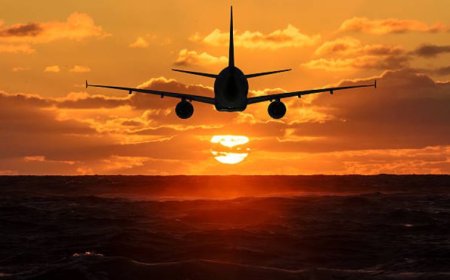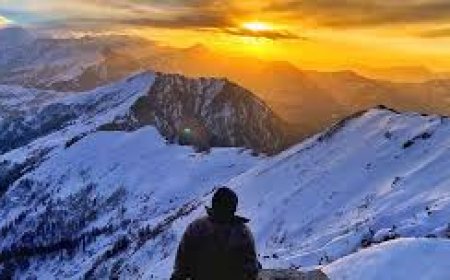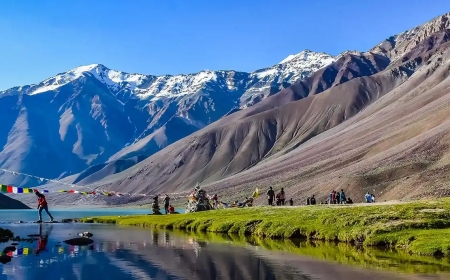How to Prevent Frostbite and Hypothermia on Your Everest Base Camp Trip
Witness the majestic beauty of Everest on this legendary trek to base camp.
When you're trekking to Everest Base Camp, watch out for frostbite and hypothermia due to the severe cold and rough weather. To stay safe, you need to prepare well and stay aware of your surroundings.
Layering your clothes is really important to keep warm. Start with a base layer that wicks away moisture so you don't feel sweaty. Then, add an insulating layer like fleece or down to trap the warmth. Finish off with a waterproof and windproof outer layer to guard against wind and rain. Dont forget insulated gloves, hats, and warm socks since frostbite often hits your fingers, toes, and ears. Heated insoles or foot warmers can help, too.
Getting used to the altitude is key to avoiding hypothermia. As you climb higher, your body struggles more to keep warm. So, take regular breaks, drink hot drinks, and eat high-energy snacks to keep your energy up. Watch for signs of frostbite (like numbness and discoloration) and hypothermia (such as shivering and confusion). If you notice any symptoms, stop right away, find shelter, and warm up gradually by layering up or sharing body heat with a buddy.
Your footwear matters a lot, too. Make sure you have waterproof and insulated boots that fit well. If they are too tight, it can restrict blood flow and lead to frostbite. Keep your feet dry and switch out wet socks as soon as you can.
Lastly, be sure to have a satellite phone or another way to contact someone in case things go wrong. By following these tips, you can lower the chances of frostbite and hypothermia on your trek to the Everest Base Camp Trek Itinerary.
Why Layering Clothes is Key to Staying Warm
When you're trekking to Everest Base Camp, dressing in layers is a must to keep warm. Layering traps heat but lets moisture out, helping you avoid frostbite and hypothermia. Start with a base layer that wicks sweat away from your skin, then add mid-layers like fleece or down jackets for insulation. Your outer layer should be waterproof and windproof to protect you from rain, snow, and wind. Always pack extra clothes so you can adjust if the weather changes. Dont forget insulated gloves, thermal socks, and a warm hat, as these help protect your hands and feet from frostbite. With layers, youll feel warm and comfy throughout the trek.
How Acclimatization Helps You Stay Safe
Getting used to the altitude is super important for preventing hypothermia on your way to Everest Base Camp. As you climb higher, your body may struggle to keep warm because theres less oxygen. Acclimatization helps your body adjust to these changes and lowers your chances of getting cold. Plan for the rest days at spots like Namche Bazaar to let yourself adapt. During these breaks, drink plenty of fluids, eat high-calorie meals, and skip the alcohol since it can mess with your circulation. Ascend slowly to avoid altitude sickness, which makes it harder for your body to stay warm. Acclimatization helps keep you safe in the chilly, high-altitude air.
Keeping Your Hands and Feet Warm
Frostbite often targets your fingers, toes, and ears, so its important to keep these areas warm. Good gloves and thermal socks are crucial for keeping blood flowing and preventing freezing. Waterproof boots will help keep your feet dry and warm, and windproof mittens are better than regular gloves. Think about using heated insoles or foot warmers during really cold parts of the trek. In harsh weather, keep your hands and feet moving to boost blood flow. Bring extra socks and gloves, and avoid tight shoes that can cut off circulation. Staying proactive about protecting your extremities is key to avoiding frostbite.
Spotting Signs of Frostbite and Hypothermia
Being able to recognize the early signs of frostbite and hypothermia is really important, so you can act fast. Frostbite starts with numbness, tingling, or pale skin on your fingers, toes, or ears. If you see these signs, find shelter, warm up slowly, and dont rub the area, as this could cause more damage. For hypothermia, watch for shivering, confusion, slurred speech, or trouble moving. If you or someone else has these symptoms, get to shelter and warm up right away by layering up or sharing body heat. Catching these issues early can help you avoid serious problems while trekking.
Eating and Drinking Right in Cold Weather
Eating well and staying hydrated are key for keeping your body warm and avoiding hypothermia on your trek. High-energy snacks like nuts, chocolate, and granola bars give you the calories you need when its cold. Stay away from alcohol and caffeine since they can make you lose heat. Hydration is just as important, but be careful not to drink too much cold water, as it can bring your body temperature down. Warm drinks like tea or soup hydrate you and help keep your core warm. Good nutrition and hydration are essential to help your body stay heat-regulated and fend off frostbite and hypothermia.
Using Emergency Gear to Prevent Frostbite and Hypothermia
Bringing along some emergency gear like a thermal blanket, extra gloves, and warm layers is important if the temperature drops suddenly. A thermal blanket can keep you warm by trapping your body heat, which is key in unexpected weather changes. Hand and foot warmers are also great for keeping your hands and feet warm during the cold nights or when youre resting. A down jacket is lightweight and easy to pack, making it perfect for emergencies. If you find yourself stuck in a storm or can't get to a warmer place, having this gear on hand can help keep your body temperature steady and protect you from frostbite or hypothermia.
How to Manage Your Rest Days to Avoid Cold Exposure
Taking rest days on the Everest Base Camp trek is really important for getting used to the altitude and avoiding too much cold exposure. These days, give your body time to adjust, which helps lower the risk of hypothermia and altitude sickness. But dont just stay still in the coldrest indoors if you can, like in teahouses, where you can warm up and drink some fluids. Avoid sleeping in wet clothes, and use a well-insulated sleeping bag suitable for low temperatures to stay warm through the night. Keep your gear dry and stored in a warm spot to avoid freezing. Staying warm while you rest helps keep your bodys defenses strong.
Importance of Sleeping Bags and Pads for Cold Weather
A good sleeping bag that can handle cold weather is a must when youre trekking to Everest Base Camp. The nights get really cold at high altitudes, so a bag with solid insulation is key to keeping you warm. Look for a sleeping bag thats rated for at least -10C (14F) for safety. Pair it with a foam sleeping pad to keep the cold from the ground at bay. A good sleeping pad will help keep your body heat stable while you sleep. Always check that your sleeping gear is good for the Everest conditions so you can stay warm and comfy during your trek.
The Role of Proper Footwear in Preventing Hypothermia and Frostbite
Wearing the right shoes is really important to prevent frostbite and hypothermia on your trek to Everest Base Camp. Waterproof, insulated boots will keep your feet dry and warm in the freezing temperatures. Avoid tight shoes as they can cut off blood flow, raising the risk of frostbite. Opt for thermal socks made from wool or synthetic materials, as they stay warm and wick moisture away. Change into dry socks if they get wet, and consider foot warmers for the colder parts of the trek. Taking care of your feet, making sure your boots fit right, and moisturizing can help keep frostbite at bay and ensure a comfortable journey to Base Camp.
Staying Warm in the High Altitudes of Everest Base Camp
At high altitudes, the temperature can drop quickly, which raises the risk of frostbite and hypothermia. To stay warm, layer your clothing smartly so youre insulated but can also let moisture escape. A windproof outer layer is key because strong winds can steal your body heat. Staying active, like walking or doing some light exercises, can help you warm up, just dont push yourself too hard, as that can make you more vulnerable to the cold. Eating high-energy foods will keep you fueled and ready to face tough conditions. Using these tips will help you stay warm and safe in the chilly environment of Everest Base Camp.
How to Avoid Frostbite on Everest
If you're heading to Everest Base Camp, it's really important to steer clear of frostbite. The first thing to focus on is how you layer your clothes. Start with a moisture-wicking base layer, then add an insulating mid-layer, and finish up with a windproof and waterproof outer layer. Pay special attention to your hands, feet, and face, since they're the most likely to get frostbite. Make sure you wear insulated gloves, thermal socks, and a hat that covers your ears and nose. Your boots should also be waterproof and insulated to keep your feet warm and dry. Avoid wearing anything too tight that could cut off circulation. Keep an eye out for early signs of frostbite, like numbness or tingling, and warm up any areas that feel off right away. Remember to take breaks to warm up, stay hydrated, and munch on high-calorie snacks to keep your body warm. Dress smart and stay alert to help prevent frostbite and enjoy your trek.
How Can We Prevent Frostbite and Hypothermia?
To keep frostbite and hypothermia at bay during your trek, start with good layering. Use a moisture-wicking base layer to keep sweat away, a warm insulating layer like fleece or down, and a waterproof and windproof outer shell to guard against the elements. Keep your hands, feet, and head covered with insulated gloves, thermal socks, and a warm hat or balaclava. Staying dry is crucial since wet clothes raise the risk of frostbite and hypothermia. Take breaks often to check for frostbite symptoms like numbness or paleness, and rest in sheltered spots. Make sure to drink enough and eat high-calorie snacks to keep your energy and body heat up. Also, take your time to acclimatizeclimbing slowly helps your body get used to the colder air. Following these steps can help lower your risk of frostbite and hypothermia.
Can You Get Frostbite at Everest Base Camp?
Yes, there's a chance of getting frostbite even at Everest Base Camp because of the cold temperatures and high altitude. While it's not as extreme as the summit, it can still get freezing, especially at night. Frostbite usually affects your extremities, like hands, feet, nose, and ears, a nd occurs when your skin and tissues freeze from staying in the cold and wind too long. To avoid this, make sure to wear insulated gloves and thermal socks, and cover your face with a mask or balaclava. Pay attention to any signs like numbness or tingling and find shelter to warm up right away. Stay on top of your acclimatization to avoid feeling tired, as fatigue makes you more sensitive to the cold. By being prepared and proactive, you can minimize the risk of frostbite while trekking at Base Camp.
How Will You Keep Warm in Below-Freezing Temperatures on Mount Everest?
When trekking to Everest Base Camp, staying warm in freezing temperatures is key to avoiding frostbite and hypothermia. Layering is the way to go: use a moisture-wicking base layer to keep sweat off your skin, a warm mid-layer like fleece, and a windproof, waterproof outer layer to block the cold. Insulated gloves, thermal socks, and a warm hat are essential for your extremities. Its a good idea to pack extra layers in case your clothes get wet. Try to keep moving with light exercises or walking, as this helps keep your body warm. Eating calorie-rich foods and drinking warm liquids also helps maintain your temperature. When you take breaks, rest in warm teahouses, and use a quality sleeping bag suitable for cold weather at night. By staying insulated and well-fed, you can manage the cold more effectively.
Conclusion
Frostbite and hypothermia are real risks when trekking to Everest Base Camp, but with the right prep, you can keep those dangers in check. Layer your clothes well, using moisture-wicking base layers, insulating mid-layers, and waterproof outer shells to stay warm. Dont forget about protecting your hands, feet, and face using insulated gear since those spots are more prone to frostbite. Staying hydrated and eating high-energy foods will help keep your body warm while trekking. Always be on the lookout for symptoms of frostbite or hypothermia, and if you notice anything, get warm right away. With these precautions, you can safely handle the cold at high altitudes and enjoy the stunning views at Everest Base Camp without risking your safety.




























